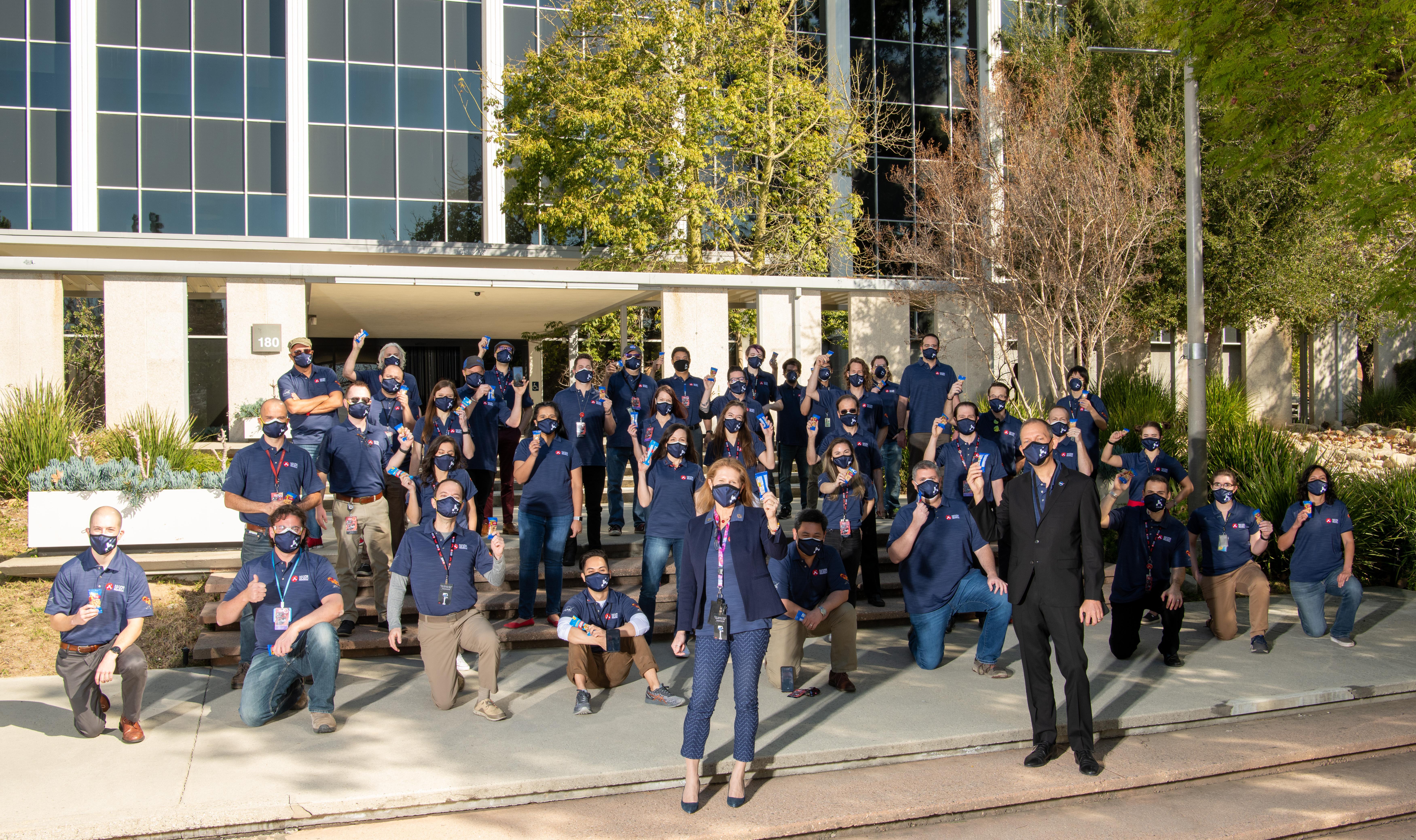
|
Mars Perseverance Team, Pre-landing
- Click the image above for a larger view
- Full-Res JPEG (7003 x 4156) (4.9 MB)
- Full-Res TIFF (7003 x 4156) (87.3 MB)
Caption:
Before NASA's Mars Perseverance rover landed on Mars on Feb. 18, 2021, the entry, descent, and landing team posed at the agency's Jet Propulsion Laboratory in Southern California with individual bags of traditional "lucky peanuts." Eating peanuts before major mission events is a longstanding tradition at JPL. In the foreground are (left to right) NASA Planetary Science Division Director Lori Glaze and NASA Science Mission Directorate Associate Administrator Thomas Zurbuchen.
Background Info:
A key objective for Perseverance's mission on Mars is astrobiology , including the search for signs of ancient microbial life. The rover will characterize the planet's geology and past climate, pave the way for human exploration of the Red Planet, and be the first mission to collect and cache Martian rock and regolith (broken rock and dust).
Subsequent NASA missions, in cooperation with ESA (European Space Agency), would send spacecraft to Mars to collect these sealed samples from the surface and return them to Earth for in-depth analysis.
The Mars 2020 mission is part of a larger program that includes missions to the Moon as a way to prepare for human exploration of the Red Planet.
JPL, which is managed for NASA by Caltech in Pasadena, California, built and manages operations of the Perseverance rover.
For more about Perseverance, go to: mars.nasa.gov/mars2020/ or nasa.gov/perseverance .
Cataloging Keywords:
| Name | Value | Additional Values |
|---|---|---|
| Target | Mars | |
| System | ||
| Target Type | Planet | |
| Mission | Mars 2020 | |
| Instrument Host | Perseverance | |
| Host Type | Rover | |
| Instrument | ||
| Detector | ||
| Extra Keywords | Color, Dust, Moon | |
| Acquisition Date | ||
| Release Date | 2021-02-19 | |
| Date in Caption | 2021-02-18 | |
| Image Credit | NASA/JPL-Caltech | |
| Source | photojournal.jpl.nasa.gov/catalog/PIA23724 | |
| Identifier | PIA23724 | |
